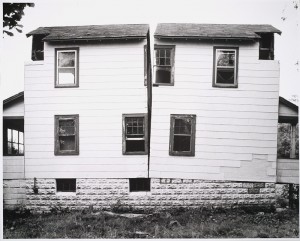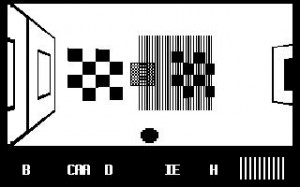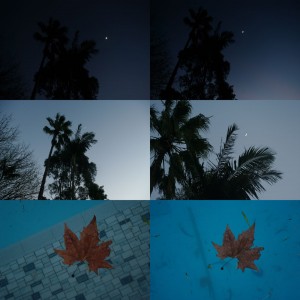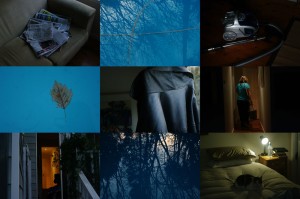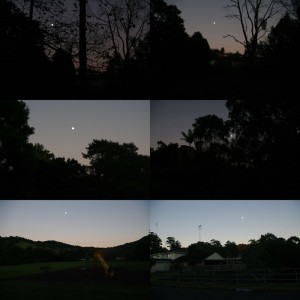The second volume of Henri Lefebvre’s Critique of Everyday Life, published in 1961, is famous for positioning the field of everyday life as a vital social and political concern.1 Turning away from the typical political-sociological focus on the sphere of production or the superstructural space of public culture and party politics, Lefebvre instead emphasises the importance of an almost imperceptible middle layer – the sphere of consumption, of ordinary habits, of everyday experience. The everyday represents an ambiguous field. On the one hand it appears as a site of alienation (shaped by the specter of commodity capitalism) and on the other hand as a site of utopic potential (a realm of interference, in which the abstract logic of capitalist relations come unstuck as they are played out, as they are lived). In this sense the everyday is associated with both acquiescence and resistance. Indeed the two possibilities are closely allied. Any potential for resistance is linked precisely to a dimension of acquiescence – to the silence, invisibility and amorphousness of the everyday.
This paradox is subject to a range of interpretations. In his 1961 article , “Perspective for Conscious Changes in Everyday Life”, Guy Debord emphasises the need for strategic intervention in the everyday.2 He begins my acknowledging its central importance:
Everyday life is the measure of all things: of the (non)fulfillment of human relations; of the use of lived time; of artistic experimentation; and of revolutionary politics.3
Debord moves on, however, to argue that, as a sphere of “separation and spectacle”, everyday life lacks adequate means on its own to serve as a genuine site of resistance. There is a need for conscious, radical, critical agents to intervene within the everyday and transform it. The urgent task is to “replace the present ghetto with a constantly moving frontier; to work ceaselessly toward the organization of new chances.”4
Writing two decades later, Michel de Certeau interprets things differently. He describes an integral dimension of resistance within the everyday, arguing particularly that the apparently meekly compliant space of consumption (of spectacular participation) is not simply passive – that it takes shape as a form of hidden production:
To a rationalized, expansionist and at the same time centralized, clamorous, and spectacular production corresponds another production, called “consumption.” The latter is devious, it is dispersed, but it insinuates itself everywhere, silently and almost invisibly, because it does not manifest itself through products, but rather through its way of using products imposed by a dominant economic order.5
Certeau distinguishes between dimensions of macro-level cultural strategy (linked to the capitalist system and state-bureaucratic apparatus) and ground-level tactics (the field of everyday actions and decision-making). The former attempts to mould the everyday to meet its interests, while the latter manages to elaborate diverse means of leading strategic instructions astray – diverting them towards other less clearly delineated, less clearly constrained, interests. The specific example Certeau employs is that of walking through the city – the wayward, protean and unpredictable rhetorics of spatial interaction that emerge within the framework of even the most regimented city grid.6
So we have two divergent conceptions. Debord argues that active cultural agency is required in order to rouse everyday life from its slumber, in order to manifest its genuine revolutionary potential, while Certeau argues that everyday life reveals its own capacity for productive interference. How we navigate these different conceptions has obvious implications for how we conceive the role of the artist as social practitioner. Do the interventions of artists appear as a necessary strategic means of mobilising the social sphere – in its passivity, in its craven, glacial unconsciousness – or are they in some sense superfluous, even patronising? Do they devalue the social sphere – its integral, transformative potential – in the very motion of embracing it? Furthermore, what does it mean to interfere with the social? What does it mean to assume the role of strategic provocateur or of holy fool? What does it mean to intervene and move comfortably in a space that is not one’s own, in which one’s activities adopt the form of other activities, in which subversion and friendly exchange can easily become indistinguishable?
As a means of gaining some perspective on these questions, it is worth mentioning yet another interpretation of the everyday. In his 1962 article, “Everyday Speech”, Blanchot focuses chiefly on the undecidable aspect of the everyday, its elusiveness as a category and as field of existence.7 The everyday, at every level, escapes; it is defined by a motion of escape. Blanchot argues that Lefebvre’s critique is relevant not only in terms of positing a new dimension of political being (whether passive or resistive), but in terms of drawing attention to a paradoxical, intimate and yet alien, ever-present and yet invisible, social domain:
[T]he critique (in the sense that Henri Lefebvre, by establishing ‘the critique of everyday life’, has used this principle of reflection) is no longer content with wanting to change day-to-day life by opening it onto history and political life: it would prepare a radical transformation of Ataglichkeit [commonplaceness]. A remarkable change in view.8
No longer appearing as the dull, statistical average, Blanchot argues that the everyday discovers a new identity as “a category, a utopia and an Idea, without which one would not know how to get at either the hidden present, or the discoverable future of manifest beings.” 9 In this sense, the everyday appears as something that is neither simply strategically interfered with nor blithely entered. It obtains an awkward, unobtainable aspect. It becomes something demanding a different mode of attention – perhaps an attentive inattentiveness. However, this does not simply open up the necessity for a (traditional avant-garde artistic) work of estranging the everyday, because the everyday is already, by definition, estranged. Instead it prompts a sense of caution. There is a need for a less complacent attitude to the field of everyday life, a greater acknowledgement of its opaqueness and integrity – a less easy sense of the possibility of either artistic interference in its flow or of an immersive, aesthetically constituted, engagement in its currents.
- Lefebvre, H 2002 Critique of Everyday Life, Verso, New York and London ↩
- Debord, G “Perspective for Conscious Changes in Everyday Life” in Knabb, K (ed.) 2006 Situationist International Anthology, Bureau of Public Secrets, Berkeley California, pp90-99 ↩
- Ibid. p.92 ↩
- Ibid. p.95 ↩
- Certeau, M 1984 *The Practice of Everyday Life*, University of California Press, Berkeley California, pp. xii-xiii ↩
- Ibid. pp.91-110 ↩
- Blanchot, M “Everyday Speech” in Johnstone, S (ed.) 2008 The Everyday, Documents of Contemporary Art, Whitechapel and MIT Press, London and Cambridge, Massachusetts ↩
- Ibid. p.35 ↩
- Ibid. ↩





